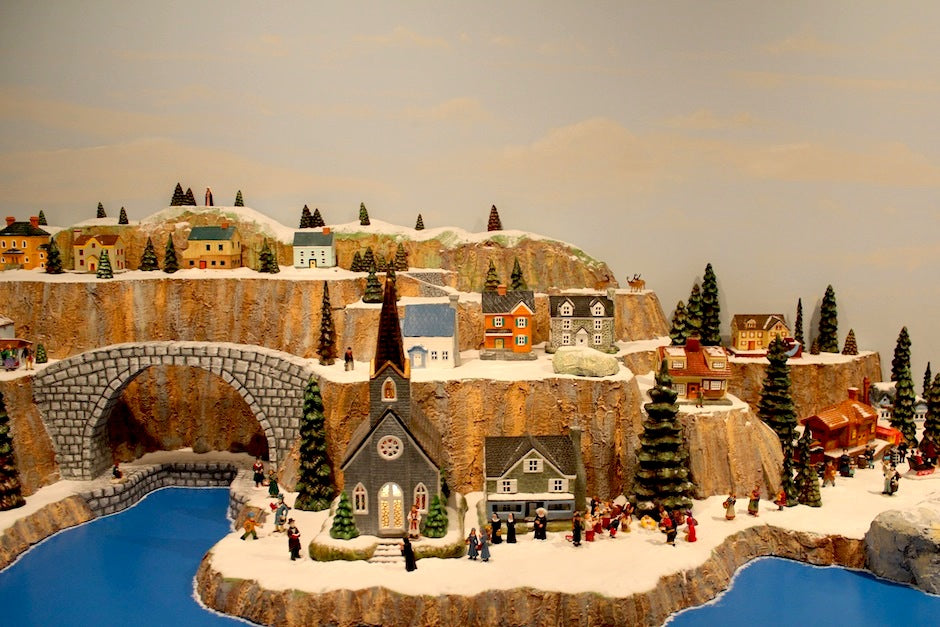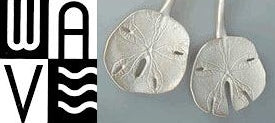Brooklyn-based garage rock band The Fleshtones have a song on their Christmas-spirited album Stocking Stuffers called “Canadian Christmas”:
I remember a time not so long ago
Pushing my way through the ice and snow
Feeling at one with the frozen tundra
Gazing at the beauty of the winter wonderland
I wonder if Christmas still lives up there
Far from the cities who no longer care
Hiding in the pines, swirling around the lakes
A little Christmas spirit is all it takes
Canadian Christmas, it’s a winter wonderland…
That sentiment is captured vividly in Joyeux Noël: Christmas in Canada, the new seasonally apt exhibit at the Knights of Columbus Museum in New Haven’s Ninth Square.
sponsored by
The show is cheery, upbeat and family-driven. Many of the dozens of crèches on display eschew the sandy vistas of Bethlehem for landscapes closer to home, covered in snow and ice.
In some of the crèche scenes, the family is not even the expected Mary, Joseph and Baby Jesus. The arrangements of mother, father and child represent all kind of births, all kinds of cultures. There’s an Inuit couple cradling their child outside an igloo, and a Native American (or First Nation, to use the Canadian term) family at their tepee. European settlers are visited by an assortment of neighbors.
Sometimes the crowds sharing in the Christmas spirit are made up of animals—not the accustomed camels and oxen but buffalo, brown bears, Canadian Eskimo dogs and even seals, basking in the glow of the newborn child.
There’s a French tradition of “santons” or Christmas crèche figurines, representing a range of characters from small villages: produce salesmen, beggars, scissors-grinders… That tradition has travelled to French-inflected Canada. Joyeüx Noël displays the work of some internationally renowned crèche craftsmen. John Schnegg, who has several elaborate crèches encased behind glass windows in one area of the multi-room exhibit, blends ornate traditions from his Austrian homeland with the homier styles of Canada, where he has lived and worked for decades. Schnegg erects lots of buildings in his crèches, from small Canadian dwellings to expansive Biblical temples. He then fills these scenes with people, angels and sheep. The effect is of a sleepy town springing to life around a blessed event.
As the exhibit explains, Canada is the second largest country in the world based on its land area, but its population of 33 million people seems miniature next to the United States’ 312 million. There’s a lot of space in between dwellings in parts of the country, and human interaction is treasured. Joyeux Noël takes that concept and runs through the snow with it. One crèche shows a Native American tribe and their newborn baby communing with Pilgrims. Another shows the traditional manger scene, but in the midst of a thriving Canadian town—folks are visiting on the street, a windmill looms in the background, and across a stream (in which ducks paddle) from the nativity are a group of street musicians whooping it up.
There are traditional crèches, post-modern crèches, crèches which sprawl into large dioramic townscapes. Sometimes the baby and his family are just a small part of a much larger community story. There are crèches made of ceramics. Resins. Pinewood. Potato Paste. Aluminum. Plaster. Clay. Alabaster stone. The Japanese raku form of pottery. And moose horns.
The Knights of Columbus Museum has done crèche exhibits before. The museum has already shown the scope of creativity and the myriad interpretations which can be brought to this iconic birth scene. Narrowing the view to a single country does not lessen the extraordinary range of artistry and impressions which can emanate from the nativity.
Canadian Christmas, it’s a winter wonderland…
Joyeüx Noël: Christmas in Canada at Knights of Columbus Museum
One State Street, New Haven (map)
Mon-Sun 10am-5pm
(203) 865-0400
http://www.kofcmuseum.org
Written and photographed by Christopher Arnott.









